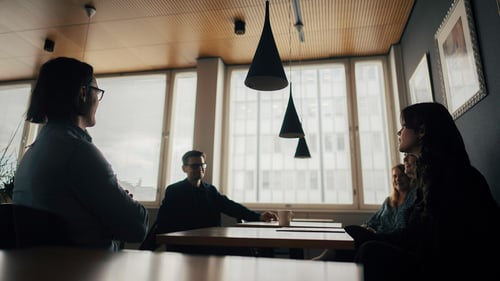The Court of Justice of the European Union (“CJEU”) is expected to issue a decision shortly in an important case which should provide further guidance concerning linking and copyright law. As we await that decision, this may be a good time for a brief review about where we are now, how we got here and in what direction this area of law is likely to take us.
Background on Copyright Law Related to Linking
The relatively simple idea that the owner of a copyrighted work should be able to determine whether, when and how to communicate protected work to the public has been discussed at length in the context of linking.
Linking is an important form of communication. Internet users gain access to content from various sources by browsing. Reading a web page and using links to move from one page to another can be accomplished with a simple click. Internal links provide easy access to another page or to content that a website owner has published while external links allow the content from other sources to be accessed. Some external links clearly and visibly import content or take the user to another site, but this is not always the case.
Frame links involve communication of works from external sources in such a manner that the user does not even notice that it has been imported. A frame displays mere content without bringing any elements other than the content itself. A frame can be used to play audiovisual content or show pictures or written works from external sources.
CJEU Decisions on Linking and Copyright Law
The CJEU has provided a series of decisions which clarify how copyrighted content that is already freely available on the internet can be used by secondary users. The decisions strive to create a fair balance between the rights of copyright owners while enabling the efficient use of works and the internet itself. The case, VG Bild-Kunst v Stiftung Preußischer Kulturbesitzrequest, Case C‑392/19 (“Bild Kunst”), discussed in more detail below, is yet to be decided but is expected to develop these concepts further.
Extent of initial authorization
In its judgement of 13 February 2014, Svensson and Others (C466/12, EU:C:2014:76) the CJEU held that the provision on a website of clickable links to works freely available on another website does not constitute an ‘act of communication to the public’. Since there is no new public in the case of hyperlinks, no new authorization is required from the copyright holder.
In its order of 21 October 2014, BestWater International (C‑348/13, not published EU:C:2014:2315) the CJEU held that rules relating to new public are the same when the secondary user uses the same techniques with the original communication even if it would involve framing techniques. The court held that if the techniques of secondary communication are the same as in initial communications, no new authorization is needed.
Lack of initial authorization and commercial use
According to criteria established by case law, when the secondary communication reaches a public, which was not considered by the copyright holder at the time of the initial communication, or in case the work would be communicated in a different technical manner, then a new authorization would be required. It did not address the problems that result from an error in the initial authorization. The criteria were developed in connection with cases where the initial communication had occurred with the copyright holder’s consent and provided no guidelines to decide cases where the content is infringing. The secondary use may be conducted by a person who does not know if the work is lawfully available or not.
In its decision of 8 September 2016, GS Media (C‑160/15, EU:C:2016:644) the CJEU ruled that posting of hyperlinks to protected but already freely available works on a website can be considered as falling within the scope of copyright protection depending on whether the person knows or should have known of the illegal nature of the publication. It went on to state that if the links are provided commercially, knowledge concerning the lack of initial authorization must be presumed.
In Case C‑527/15, the court extended the interpretation even further holding that making available and management of a sharing platform on the internet, which is used for indexing metadata relating to protected works and for the provision of a search engine that allows users of the platform to locate those works and to share them in the context of a peer-to-peer network is considered relevant communication. Use of such platforms falls within the scope of copyright protection.
In sum, the current case law is mindful of the position of an innocent user in connection with liability related to infringement while maintaining that use of links for sharing infringing content is not acceptable. Requiring informed decisions, however, creates its own new challenges. For example, whenever content is provided or played without action from the user and from sources that are unknown to the user, there are no informed decisions.
Automatic display
So, what about the future?
If the CJEU follows the opinion of the advocate general, there will be new criteria for the determination of the scope of initial authorization. In the Bild Kunst case, C‑392/19 the CJEU will consider websites that contain thumbnails of original works such that when the user views the normal-sized work, the content is imported from another source to a frame which appears to be part of the same website as the thumbnail.
In his opinion issued on 10 September 2020, the Advocate General, Maciej Szpunar, suggested that automatic display of a work through automatic links would be treated differently from providing ‘clickable’ links that the user may decide to deploy in order to access content from an external source. Having a work automatically displayed on a page without any further action would constitute communication to the public within the scope of the copyright directive. Initial authorization would not extend to cover situations where the content is made available for the public automatically.
The Bild Kunst case also may develop case law by recognizing the copyright holder’s interest in allowing licensees to publish electronic works. The holder of a copyright has previously been understood to be able to exercise substantial control over the work since links are associated with a target page, and since the copyrighted work can be removed from that location. Such measures can be used to disable the links and the copyright holder can maintain control.
Provided that the advocate general’s opinion is accepted as a basis for the judgment, the Bild Kunst case may handle the matter differently by implicitly recognizing that the copyright owner might not be able to exercise such control if the work is published by a licensee. According to the advocate general, it is also an important factor that republishing may require active and costly measures to maintain such control.
Express authorization would be required for secondary use that appears as if the work originates from a secondary user. Also, according to the Advocate General’s opinion, technical measures for disabling framing and embedding, that protect the work from being automatically displayed, should be considered as effective protection measures under Article 6 of the directive 2001/29.
As might be expected given the topic of this article, we provide for your convenience and further reading, a link to the AG´s opinion (for which we give him full credit and recognition) here.
Stay tuned for the upcoming CJEU decision and our follow-up article on this topic.





